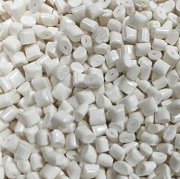In a world increasingly reliant on high-efficiency materials, Polybutylene Terephthalate (PBT) has emerged as a silent workhorse across multiple industries. This high-performance thermoplastic, known for its strength, dimensional stability, and thermal resilience, plays a pivotal role in the functionality of everyday technologies, from electric vehicles to smart appliances. As manufacturers seek alternatives to metals and other heavier materials, PBT stands out as a reliable, lightweight solution capable of withstanding the rigors of modern engineering demands.
Understanding PBT: The Science Behind the Material
PBT is a semi-crystalline polyester with characteristics that allow it to perform consistently in demanding environments. Unlike some thermoplastics that deform under stress or heat, PBT maintains its structural integrity over time. This is largely due to its ability to resist high temperatures, maintain dimensional accuracy, and offer low moisture absorption. These qualities make it especially attractive in applications where reliability and precision are non-negotiable.
Why PBT Outperforms Traditional Materials
What sets PBT apart is not merely its chemical makeup, but how it translates into real-world durability. It retains its mechanical strength even when exposed to elevated temperatures, making it ideal for automotive engine compartments or electronics exposed to heat. Unlike metals, it doesn’t corrode or conduct electricity, which is a significant advantage in electrical insulation. Furthermore, PBT’s resistance to chemicals like oils, solvents, and fuels makes it suitable for use in aggressive industrial environments.
PBT’s surface finish also adds to its appeal. It offers excellent moldability and aesthetics, which is why it’s often found in the housings of consumer electronics and appliances where visual appeal and toughness go hand in hand. With the capability to be customized with additives, such as glass fibers for improved stiffness or flame retardants for enhanced safety, PBT is remarkably adaptable for a wide range of engineered solutions.
Driving Innovation Across Industries
In the automotive sector, PBT is being increasingly used to replace metal and less stable plastics. As vehicles become more complex and electrified, the material’s electrical insulating properties and heat resistance make it indispensable in components like connectors, sensors, control units, and battery housings. The push toward lighter vehicles for improved fuel efficiency further supports the growing reliance on polymers like PBT.
The electronics industry has also embraced PBT for its stability and insulation properties. Inside modern smart devices, routers, chargers, and circuit protection components, PBT ensures performance without compromising safety. Even in compact designs where heat buildup is an issue, PBT proves reliable.
In household appliances, PBT finds a place in high-stress components such as motor housings, hairdryer casings, and water pump parts. Its ability to withstand prolonged exposure to heat and mechanical loads ensures that these products perform consistently over time.
In the medical field, while PBT is not typically used in implantable devices, it plays a critical role in housings for diagnostic equipment, fluid-handling devices, and non-invasive instruments. Its chemical resistance allows it to endure frequent cleaning cycles, and its structural stability ensures that medical devices remain accurate and functional.
Sustainability and the Next Generation of PBT
As sustainability becomes more central to industrial strategy, PBT is evolving. Manufacturers are now developing recycled and bio-based grades of the polymer that maintain its original strength and performance characteristics. These newer variants contribute to circular manufacturing processes and reduce dependence on petroleum-based feedstocks.
Moreover, PBT is easily recyclable. It can be mechanically processed without significant loss of properties, allowing industries to reuse it efficiently while meeting environmental standards. This potential makes it an attractive option for companies aligning their operations with green manufacturing practices.
Beyond the Basics: The Future of High-Performance Polymers
The innovation surrounding PBT is far from over. Research is now pushing the boundaries into conductive grades for electromagnetic shielding, as well as nanocomposite variants with even greater mechanical properties. These enhancements will likely expand PBT’s role in next-gen technologies such as 5G infrastructure, autonomous vehicles, and smart medical devices.
As industries continue to demand materials that can deliver higher performance under increasingly specific conditions, the importance of polymers like PBT becomes ever clearer. Its ability to meet structural, thermal, and electrical demands, all while supporting sustainable manufacturing practices, places it at the forefront of material science.
PBT’s strength, stability, and adaptability render it one of the most valuable polymers available today. As industrial design becomes more complex and performance expectations rise, PBT will continue to be a crucial player, quietly powering the future of technology with precision and resilience.
Find a detailed analysis of the polybutylene terephthalate market performance, dynamics, trends, and prospects in the in-demand research report “Polybutylene Terephthalate (PBT) 2025 Global Market Review and Forecast to 2034”.
